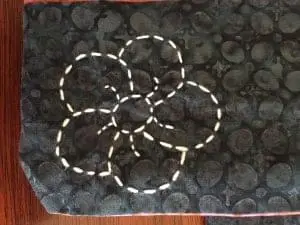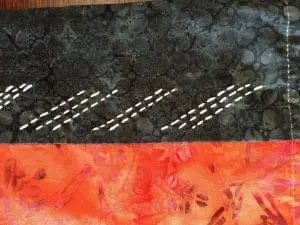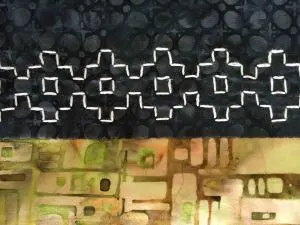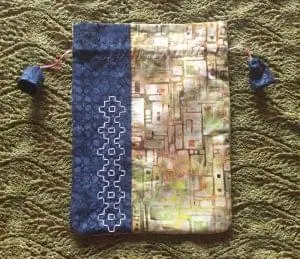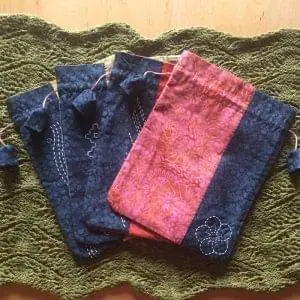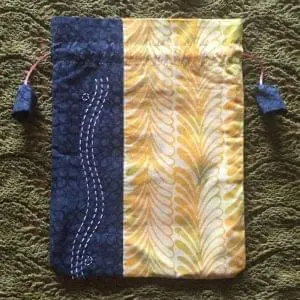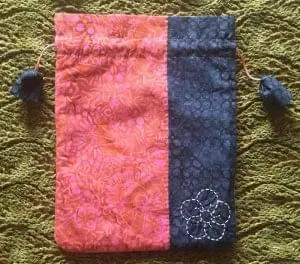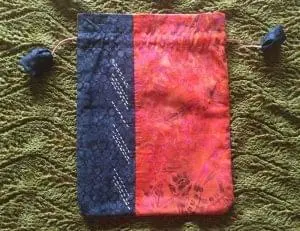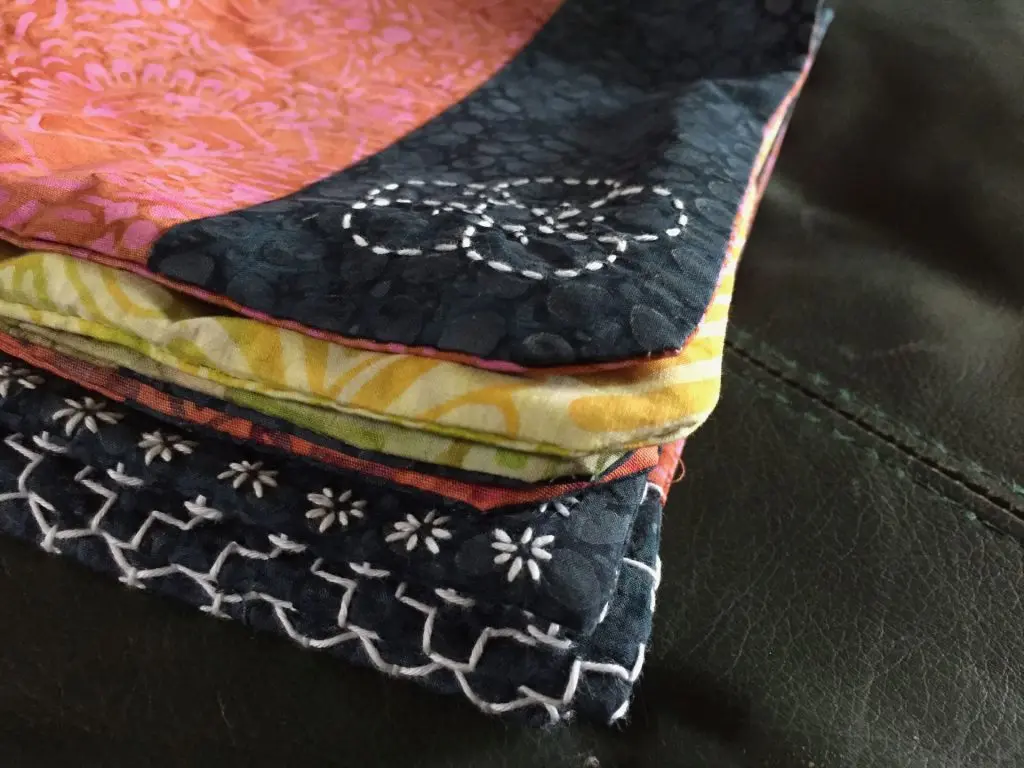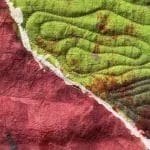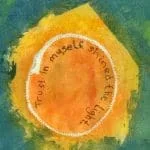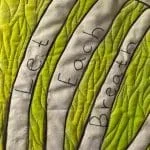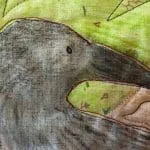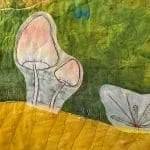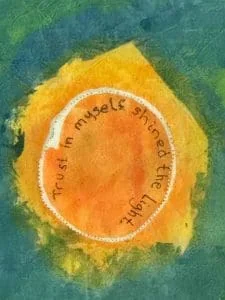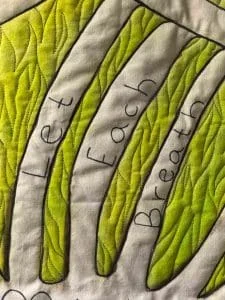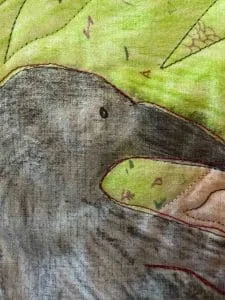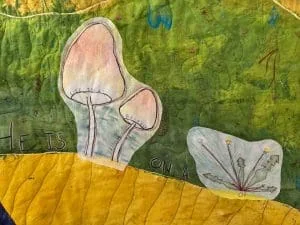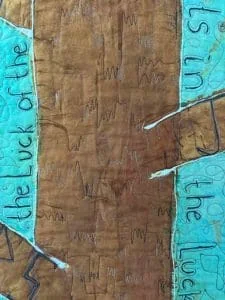Kinchaku are drawstring bags originally designed in Ancient Japan to hold money and later small personal items. While I’ve made many for specific uses, like the kinchaku I made for the Hand-fasting cord I created for my first wedding, this series was about breaking away from the constraints that come with custom design.
I set out with my first series to create a set of elegant, completely handmade kinchaku. All of the fabrics are cotton, purchased from Piece by Piece Fabrics in Eugene, Oregon, and the drawstring is hand-dyed satin rattail, dyed in my studio. I used cotton sashiko thread from Japan for the sashiko portion.
Each bag in this series is lined with a playful retro-style print that matches the outer fabrics, offering a light-hearted air to each that connects them as a single series. The outer fabrics are a selection of batiks that spoke to me of playfulness, joy, and peace. I used the same blue for each piece in this series as well as for the decorative ends on the drawstrings.
I chose sashiko patterns for each that convey a sense of motion and stillness, straight and round. Together, they describe balance and harmony. On their own, each is designed to invoke a sense of elegance and beauty.

My Thoughts on this Series
This was my first kinchaku series. In the past, I’ve created single kinchaku for specific purposes, such as my Lazy Kate Kinchaku. My intention in this series was to create a set of kinchaku that could each stand on their own, yet looked like they truly belong together.
I chose the same blue batik fabric for each of the kinchaku fields and the ends for the ties and the same pink satin rattail for the draw string on each. That connected each piece in the series well. To give them variety, I chose two rounded and two straight line sashiko patterns. I stitched the entire series by hand, no machines used at all. In matching up the sashiko patterns with each of the larger colors, I aimed to explore the balance between movement and stillness energy.
With the two straight line sashiko bags, I looked for the balance between motion and grounded energies. The blocky pattern in the green bag paired with the keystone sashiko pattern connects the masculinity of the straight lines with grounded energies as represented by square shapes. The red bag with its moving bamboo sprigs and the straight lines of the Arrows sashiko pattern emphasize motion. The squares of the pink batik coupled with the completed round plum blossom connotate stillness while the wave pattern of the yellow bag expresses motion.
I like how the sashiko patterns pick up elements of the batiks with which they’re paired. The pink pattern, for instance, is printed with what looks a little like playing cards arranged in fans. The petals of the plum blossom on that bag overlap one another, mimicking the cards on the pink batik. The greatest challenge was in finding a sashiko pattern that picked up the elements of the red batik fabric. The bamboo sprig pattern of the red batik includes some straight lines, giving the fabric the feeling of sharp motion. The Arrows sashiko pattern I chose emphasises that feeling in a way I think works well.
Overall, I like this series a lot. Each piece is elegant and sophisticated on its own. Together, they offer a taste of the space between stillness and motion.
